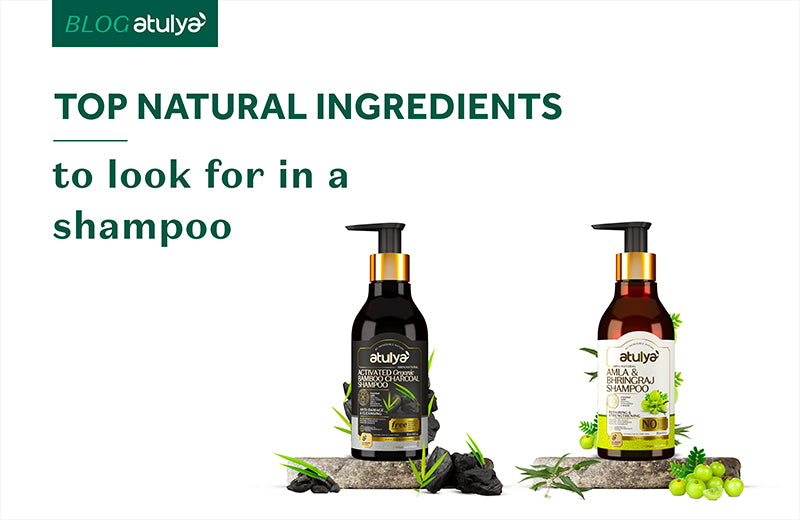Skin Brightening vs Skin Whitening: What’s the Difference and Why It Matters
When we talk about skincare, skin brightening and skin whitening are two terms that can’t be ignored! Although these terms sound similar and are often used interchangeably, they represent very different concepts, both in their function and their cultural implications.
So, to clear the confusion about these two terms, here we’ll explore skin brightening vs skin whitening, how each method works, the ingredients typically used, and why this distinction matters for both your skin and your self-esteem.
Table of Contents
What is Skin Brightening?
Skin brightening refers to the process of improving the skin’s natural radiance by improving skin tone, reducing dullness, and increasing overall luminosity. It does not involve changing your skin colour but focuses on restoring a healthy, glowing complexion by addressing issues such as uneven pigmentation, sun damage, and dark spots.
atulya apple cider vinegar is one example of the skin-brightening products.
How It Works?
Brightening targets the surface layers of the skin by encouraging cell turnover and exfoliation. It helps brighten your skin by:
-
Removing dead skin cells
-
Boosting collagen production
-
Enhancing hydration and elasticity
-
Fading hyperpigmentation or post-inflammatory marks
Common Ingredients in Brightening Products
If you’re wondering what is the best for skin lightening take a look at the ingredients that can brighten your skin.
-
Vitamin C: It is a powerful antioxidant that fades dark spots and promotes collagen.If you like, you can try our vitamin C product range.
-
Niacinamide (Vitamin B3): Helps even out skin tone and improve elasticity.
-
Alpha Hydroxy Acids (AHAs): Exfoliate the skin to improve texture and brightness.
-
Liquorice Extract: Naturally brightens and soothes inflammation.
-
Arbutin: A gentle plant-based compound that reduces melanin production.
Who Is It For?
Skin lightening products are suitable for anyone looking to improve the radiance of their skin, especially those struggling with:
-
Dull or tired-looking skin
-
Uneven skin tone
-
Sun spots or age spots
-
Post-acne marks
What is Skin Whitening?
Skin whitening is the practice of using chemicals to lighten the natural skin tone, often by reducing the amount of melanin, the pigment responsible for skin colour. Unlike brightening, whitening aims to alter your skin tone to a lighter shade, sometimes drastically.
How It Works?
Whitening products work by suppressing the production of melanin in the skin using agents that inhibit the enzyme tyrosinase, which is essential for melanin production.
Common Ingredients in Whitening Products
-
Hydroquinone: A strong chemical that lightens dark patches; often controversial and banned in several countries due to potential side effects.
-
Kojic Acid: A byproduct of fermented rice or mushrooms, used to inhibit melanin.
-
Mercury Compounds: Highly toxic and illegal in many parts of the world, but unfortunately still found in some unregulated whitening creams.
-
Glutathione: An antioxidant taken orally or injected in some regions for overall lightening effects.
The Dangers of Whitening
While some ingredients (like kojic acid or glutathione) may be used safely under medical supervision, they can cause various harm to your skin, such as:
-
Skin thinning and sensitivity
-
Permanent skin damage
-
Increased risk of infections
-
Mercury poisoning
-
Psychological effects from unrealistic beauty standards
Skin Brightening vs Skin Whitening: Comparison Table
Here I’ve listed difference between brightening and whitening, so let’s take a look!
|
Aspect |
Skin Brightening |
Skin Whitening |
|
Definition |
Enhances natural skin tone by improving radiance and glow |
Alters natural skin tone to achieve a lighter complexion |
|
Goal |
Restore healthy, even, and glowing skin |
Lighten or bleach the skin to reduce melanin levels |
|
Skin Tone Impact |
Does not change the skin’s natural color |
Intends to lighten the skin colour |
|
Primary Action |
Boosts cell turnover, fades dark spots, evens skin tone |
Inhibits melanin production to lighten skin |
|
Common Ingredients |
Vitamin C, Niacinamide, AHAs, Liquorice Extract, Arbutin |
Hydroquinone, Kojic Acid, Mercury (harmful), Glutathione |
|
Suitability |
Safe for all skin tones and types |
Risky, especially for darker skin tones |
|
Associated Risks |
Generally minimal with proper use |
Can cause skin thinning, irritation, mercury poisoning, etc. |
|
Cultural Sensitivity |
Celebrates individuality and diversity |
Can reinforce harmful stereotypes and societal pressure |
|
Regulatory Status |
Mostly approved and regulated ingredients |
Some ingredients are banned or restricted in many countries |
|
Psychological Impact |
Encourages self-care and self-acceptance |
May be driven by low self-esteem or social bias |
|
Long-term Effect |
Healthier, radiant skin with consistent use |
Potential long-term skin damage if misused |
Cultural and Ethical Implications of Skin Brightening and Skin Whitening
The issue of skin whitening or brightening is deeply rooted in societal attitudes toward race, beauty, and self-worth. In many cultures, lighter skin has historically been associated with higher social status, beauty, and opportunity. This belief is a legacy of colonialism, classism, and systemic racism.
Skin whitening follows the idea that lighter skin is more desirable, which can contribute to colourism, a form of discrimination based on skin tone that affects people within the same ethnic or racial group.
On the other hand, skin brightening celebrates your natural complexion by promoting healthy skin rather than trying to change its colour. It is a more inclusive approach that aligns with the modern emphasis on skincare as self-care rather than self-erasure.
How to Choose the Right Products?
When shopping for skincare, here are a few tips to ensure you’re choosing brightening (not whitening) products:
- Read the labels:Look for ingredients that support cell turnover and antioxidant protection rather than melanin suppression.
- Avoid harsh chemicals: Steer clear of hydroquinone (unless prescribed), mercury, and unregulated products.
- Consider your goals: Are you trying to get rid of sun spots or change your overall skin tone? Your intention should guide your product choices.
- Consult a dermatologist: A skincare professional can help tailor a regimen based on your specific skin needs.
Conclusion
Skin brightening and skin whitening may sound similar, but they represent very different philosophies. Brightening is about revealing your skin's best version that is healthy, glowing, and true to its natural tone. Whitening, however, often stems from a desire to change who you are to fit narrow and often harmful beauty ideals.
For skin brightening products, you can check out atulya grapefruit and vitamin C face wash or atulya vitamin C face serum.
By choosing skin brightening over whitening, you're not just making a safer choice for your skin; you’re also making a powerful statement about self-acceptance and diversity.
FAQs
Q. 1. What is the difference between skin brightening and skin whitening?
Ans. Skin brightening aims to enhance the skin’s natural glow, reduce dullness, and even out skin tone. Skin whitening, on the other hand, is the deliberate lightening of skin to achieve a lighter complexion, often targeting melanin production.
Q. Are skin brightening products safer than whitening products?
Ans. Generally, yes. Brightening products focus on improving skin clarity and tone using milder ingredients like vitamin C or niacinamide. Whitening products may contain harsher chemicals like hydroquinone or mercury, which can pose health risks if used improperly.
Q. Is using skin whitening products unethical?
Ans. The ethical concerns lie more in how these products are marketed and the societal pressures that drive their use. While personal choice is valid, the normalisation of skin lightening can perpetuate harmful racial and cultural biases.




